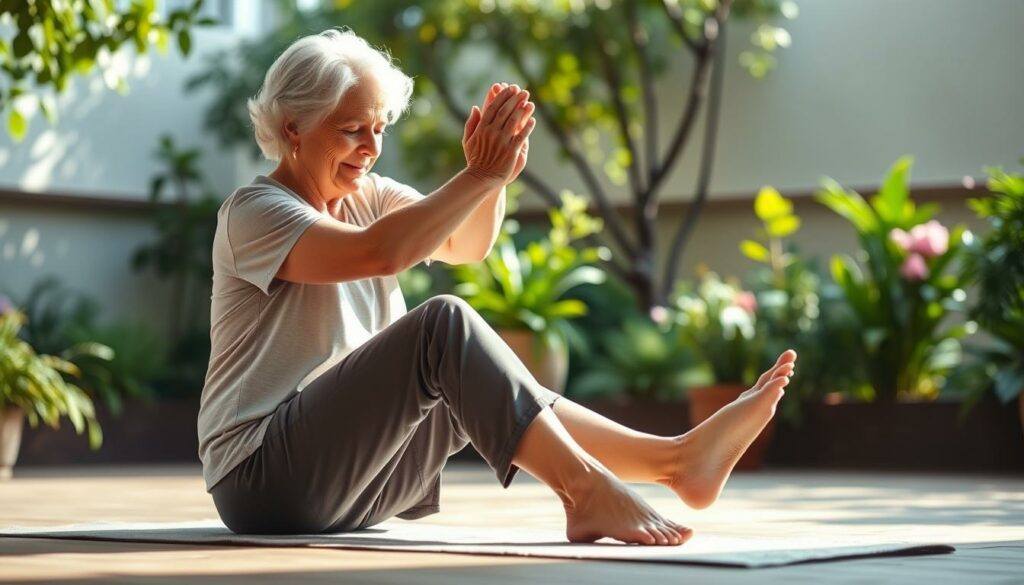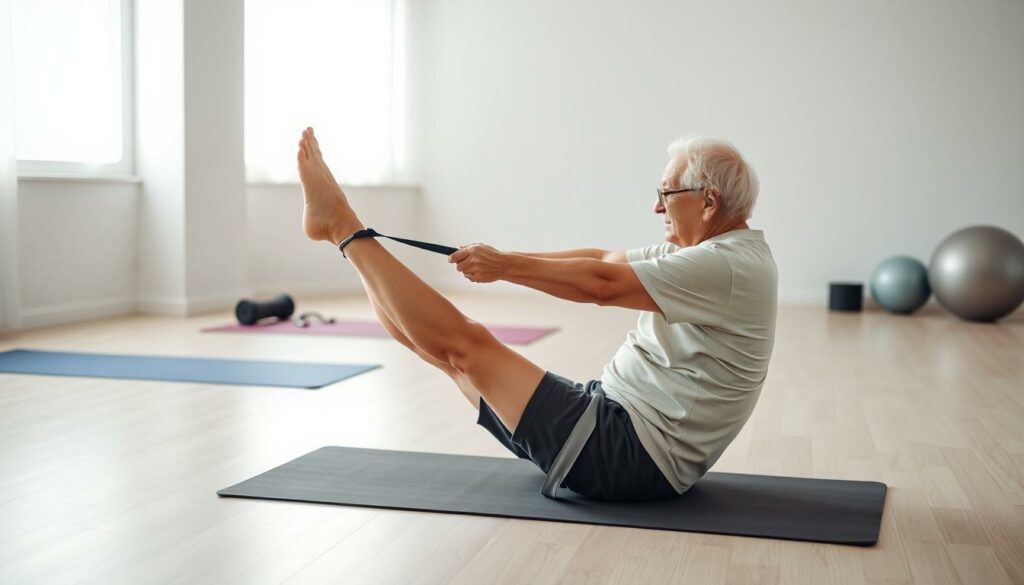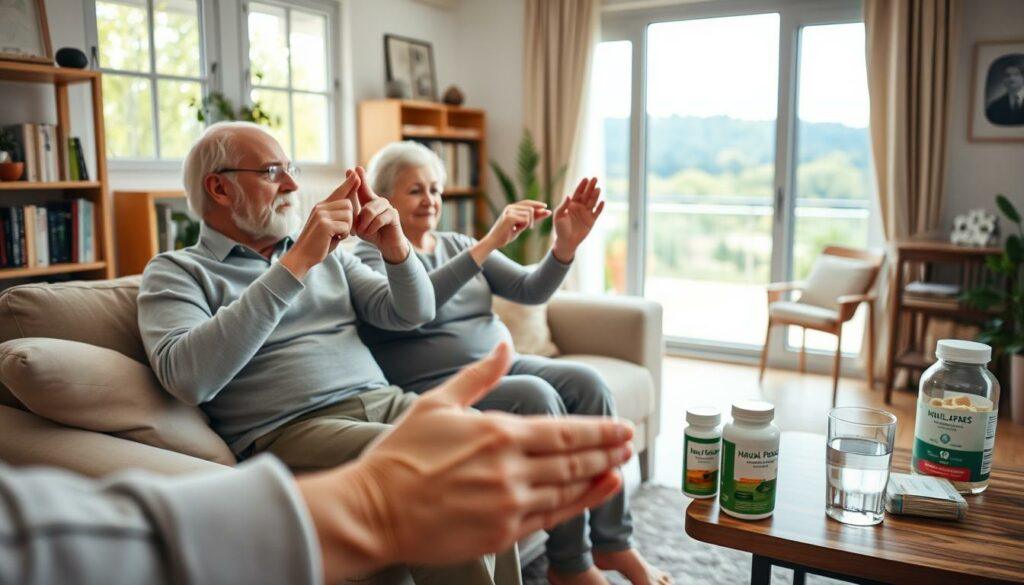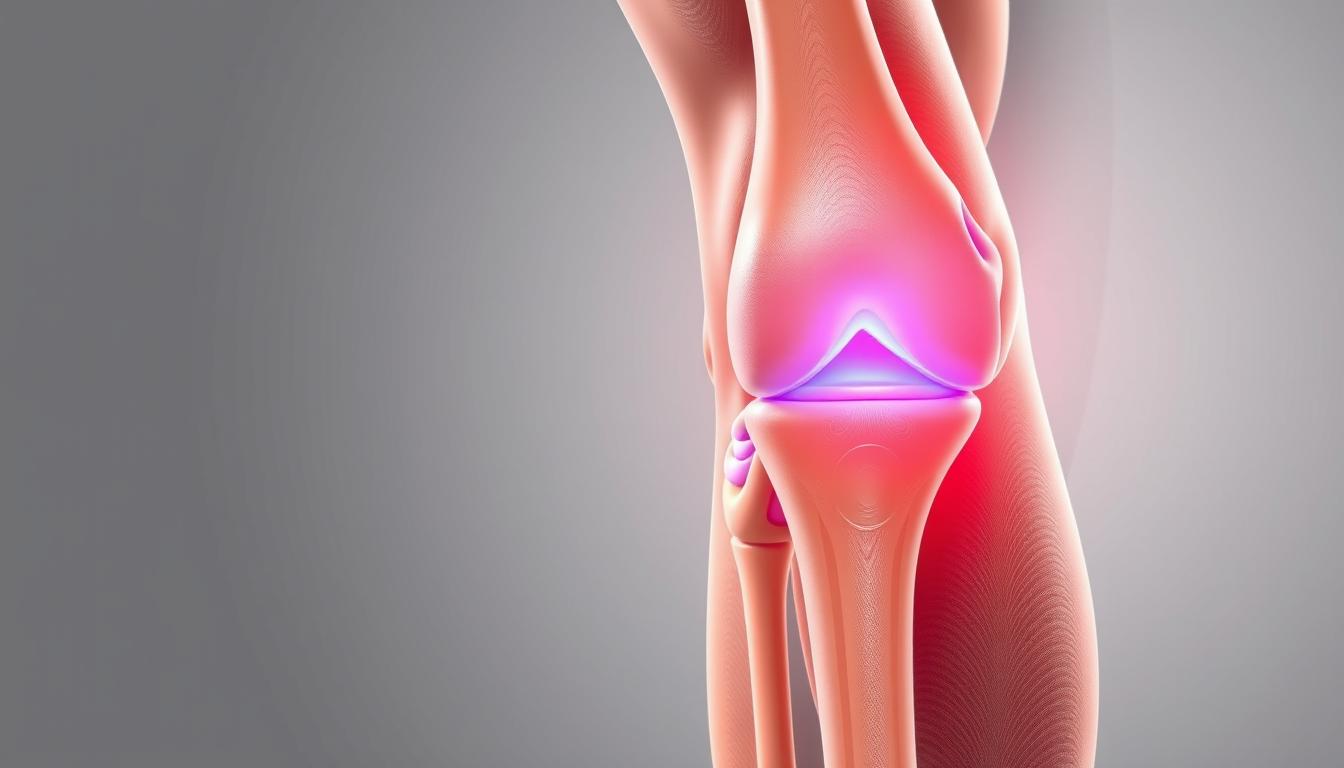Did you know that ACL-related issues account for nearly 50% of all joint problems in older adults? These conditions can drastically affect mobility, making everyday activities a challenge. Recognizing the signs early is crucial to maintaining an active lifestyle.
Ligaments are tough tissues that stabilize your joints. When they’re damaged, it can lead to pain, swelling, and long-term instability. Fortunately, modern advancements in treatment options offer hope for recovery, even in severe cases.
Understanding the importance of early intervention can help you protect your joints and stay mobile. This section will explore why these issues must not be ignored and how you can take steps to address them effectively.
Key Takeaways
- ACL-related problems are common and can severely impact mobility.
- Early recognition of symptoms is essential for effective care.
- Ligaments play a critical role in joint stability.
- Modern treatments provide pathways to recovery.
- Preventive measures can help maintain long-term joint health.
Understanding Knee Ligament Injuries in Seniors
Joint stability is crucial for maintaining an active lifestyle, especially as we age. When the tissues that support your joints are damaged, it can lead to discomfort, swelling, and long-term instability. Recognizing the causes and symptoms early can help you take proactive steps to protect your mobility.
What Are Joint Problems?
Joint problems occur when the tissues connecting bones are injured. These injuries can range from mild sprains to severe tears. The cruciate ligament, for example, is one of the most commonly affected areas. Damage here often results in pain and difficulty moving.
Common Causes and Risk Factors
Many joint issues stem from sudden trauma, like falls or awkward movements. Over time, wear and tear can also weaken these tissues. Activities that involve twisting or direct impact, such as sports, increase the risk. Additionally, aging reduces elasticity, making injuries more likely.
Here are some key factors to consider:
- Pain and swelling are common signs of injury.
- Instability in the joint can make everyday tasks challenging.
- Severe cases may require surgery, though less invasive options are often available.
Understanding these risks helps you take steps to protect your joints and maintain your quality of life.
Recognizing the Signs and Symptoms

Spotting the first signs of trouble can make a big difference in recovery. Early symptoms often include severe pain, noticeable swelling, and a feeling of instability in the joint. These signs are your body’s way of telling you something isn’t right.
Pain is usually the first indicator. It can range from a dull ache to sharp discomfort, especially when moving. Swelling often follows, making the area feel tight and warm to the touch. Instability, or a feeling that the joint might “give way,” is another common symptom.
Pain, Swelling, and Joint Instability
If you experience these symptoms, it’s important to act quickly. The anterior cruciate ligament is often involved in such cases. Damage here can lead to long-term issues if not addressed promptly.
Here’s a quick guide to help you understand what to look for:
| Symptom | What It Means | Action to Take |
|---|---|---|
| Severe Pain | Possible tear or sprain | Rest and consult your doctor |
| Swelling | Inflammation or fluid buildup | Apply ice and elevate the area |
| Instability | Ligament damage | Seek medical attention immediately |
When to Seek Medical Attention
If symptoms persist or worsen, it’s time to see your doctor. They may recommend tests like an MRI to confirm the extent of the damage. Early diagnosis is crucial for effective treatment and recovery.
Ignoring these signs can lead to further complications. Don’t hesitate to reach out to a healthcare professional if you’re unsure. Your joint health depends on timely action.
Knee Ligament Injuries In Seniors: Prevention And Treatment

Protecting your joints starts with understanding the risks and taking proactive steps. Even a small tear can lead to significant issues if not addressed properly. Prevention is key to maintaining mobility and avoiding long-term problems.
Every person’s situation is unique, which means the best approach to care varies. Whether you’re an active athlete or less mobile, there are strategies to help you stay healthy. Here’s what you need to know to protect your joints effectively.
Why Prevention Matters
Preventing joint issues is far easier than treating them. Early care can stop minor problems from becoming major ones. Simple changes in your daily routine can make a big difference.
For example, strengthening exercises improve stability. Wearing supportive footwear reduces strain. These small steps add up over time, helping you avoid pain and discomfort.
Consequences of a Tear
Even a partial tear can cause significant issues. It can lead to pain, swelling, and instability in the joint. Without proper care, it may worsen, requiring more intensive treatment.
Ignoring these signs can limit your mobility. It’s essential to act quickly if you notice any symptoms. Early intervention can prevent long-term damage.
Preventive Strategies for Everyone
Whether you’re active or less mobile, there are ways to protect your joints. Here’s a quick guide to help you get started:
| Strategy | Benefit | How to Implement |
|---|---|---|
| Strengthening Exercises | Improves joint stability | Incorporate leg lifts and squats into your routine |
| Proper Footwear | Reduces strain on joints | Choose shoes with good arch support |
| Regular Stretching | Enhances flexibility | Stretch daily, focusing on your legs and hips |
By taking these steps, you can reduce your risk of joint problems. Prevention is always better than treatment, so start today to protect your mobility for the future.
Non-Surgical Treatment Options for Ligament Injuries
Recovering from joint issues doesn’t always require surgery. Many injuries can be managed effectively with simple, non-invasive methods. These approaches focus on reducing pain, promoting healing, and restoring stability to your leg.
Rest, Ice, Compression, and Elevation
The R.I.C.E. protocol is a cornerstone of non-surgical care. Resting your injured leg prevents further strain. Applying ice reduces swelling, while compression and elevation help manage inflammation.
Here’s how to implement R.I.C.E. effectively:
- Rest: Avoid putting weight on the injured area.
- Ice: Apply for 15-20 minutes every 2-3 hours.
- Compression: Use a bandage to support the joint.
- Elevation: Keep the injured leg raised above heart level.
Role of Physical Therapy and Medication
Physical therapy plays a crucial role in recovery. It strengthens the muscle around the joint, improving stability and mobility. Therapists guide you through exercises tailored to your needs.
Medications, such as anti-inflammatories, can also support healing. They reduce pain and swelling, making it easier to engage in therapy and daily activity.
| Treatment | Benefit | How It Helps |
|---|---|---|
| Physical Therapy | Strengthens muscle | Improves joint stability and mobility |
| Medication | Reduces inflammation | Eases pain and supports recovery |
| R.I.C.E. Protocol | Manages swelling | Promotes healing and reduces strain |
Modifying your activity level is also important. Avoid high-impact sports until you’ve fully recovered. This prevents re-injury and allows your body to heal naturally.
By combining these methods, you can regain strength and return to your daily routine without surgery. Always consult a healthcare professional to tailor the approach to your specific needs.
Surgical Treatment Considerations and Techniques

Complete tears often require surgical intervention for full recovery. When non-surgical methods fail to restore stability, surgery becomes the best option. This section explores the differences between ACL reconstruction and repair, helping you understand which approach suits your needs.
ACL Reconstruction vs. Repair
ACL reconstruction involves replacing the torn tissue with a graft, often from your thigh or a donor. This method is preferred for its long-term success. Repair, on the other hand, attempts to mend the existing tissue, but it has a higher failure rate over time.
Studies show that reconstruction provides better stability, especially for active individuals. If your joint continues to swell or feels unstable, reconstruction may be the right choice. Your doctor will guide you in selecting the best procedure based on your condition.
Post-Surgical Rehabilitation
Recovery after surgery is a gradual process. Physical therapy plays a key role in restoring proper motion and strength. Early exercise focuses on improving flexibility and reducing stiffness in the thigh and surrounding muscles.
Here’s what to expect during rehabilitation:
- First 6 Weeks: Gentle movements to regain range of motion.
- 3-5 Months: Light jogging and strengthening exercises.
- 6-12 Months: Gradual return to sports or high-impact activities.
Following the correct direction in therapy ensures a successful recovery. Skipping steps can lead to complications, so stick to your plan.
“Rehabilitation is not just about healing; it’s about rebuilding strength and confidence in your joint.”
By committing to your recovery timeline and working closely with your therapist, you can regain full function and return to your active lifestyle.
Preventive Exercises and Strengthening Routines

Targeted routines can significantly improve stability and reduce the risk of injury. Whether you’re recovering from an acl injury or aiming to protect your knee joint, the right exercises make a difference. Strengthening the muscles around your joints supports your bone structure and enhances overall mobility.
Effective Stretching Techniques
Stretching is a cornerstone of joint health. It improves flexibility, reduces stiffness, and helps maintain the integrity of your tissue. Start with a 5-10 minute warm-up, such as walking or cycling, to prepare your muscles. Then, focus on stretches that target your legs and hips, holding each for up to 30 seconds.
Here are some key stretches to incorporate:
- Hamstring Stretch: Sit on the floor with one leg extended. Reach toward your toes, holding for 30 seconds.
- Quadriceps Stretch: Stand on one leg, pulling the other heel toward your glutes. Hold for balance and repeat.
- Calf Stretch: Place one foot behind you, pressing the heel into the ground. Lean forward slightly for a deep stretch.
Strengthening Exercises for Stability
Building strength around your knee joint is essential for stability. Exercises like squats, leg lifts, and calf raises target the muscles that support your bone structure. Start with 2-3 sets of 10-20 repetitions, gradually increasing intensity as you gain strength.
Consider these routines to enhance stability:
| Exercise | Benefit | How to Perform |
|---|---|---|
| Squats | Strengthens thighs and glutes | Stand with feet shoulder-width apart, lower into a sitting position, then rise. |
| Leg Lifts | Improves hip and thigh strength | Lie on your back, lift one leg at a time, holding for a few seconds. |
| Calf Raises | Enhances lower leg stability | Stand on your toes, then slowly lower your heels back to the ground. |
Incorporating these exercises into your routine can complement your treatment plan and reduce the likelihood of another acl injury. Remember, consistency is key to maintaining joint health and mobility.
Lifestyle Adjustments and Daily Care in Seniors

Small changes in your daily habits can have a big impact on your joint health. By making mindful adjustments, you can reduce strain and lower your risk of injury. This section provides practical tips to help you stay active and pain-free.
Proper warm-up exercises are essential before any physical activity. They prepare your body for movement and reduce the chance of overuse. Start with gentle stretches or a short walk to get your muscles ready.
Weight management is another key factor. Excess weight puts extra pressure on your joints, increasing the risk of wear and tear. A balanced diet and regular low-impact exercises, like swimming or cycling, can help you maintain a healthy level of fitness.
Here are some additional tips to support your joint health:
- Mindful Movement: Avoid sudden twists or jerks. Focus on smooth, controlled motion to protect your joints.
- Posture Awareness: Keep your spine aligned and avoid slouching. Good posture reduces strain on your body.
- Activity Balance: Alternate between rest and movement. Overdoing it can lead to fatigue and injury.
Choosing the right care option is also important. Whether it’s physical therapy, supportive footwear, or ergonomic tools, these adjustments can make a significant difference. Remember, prevention is always better than treatment.
By incorporating these changes into your routine, you can maintain your mobility and enjoy an active lifestyle. Start today to protect your joints and reduce your overall risk of injury.
Customizing Treatment Based on Your Health and Activity Level
Your treatment plan should reflect your unique health and activity needs. A one-size-fits-all approach rarely works, especially when dealing with complex issues. Evaluating your overall health and lifestyle is the first step toward effective recovery.
Evaluating Your Overall Health
Before deciding on a treatment option, it’s crucial to assess your overall health. Factors like age, fitness level, and existing conditions can influence your recovery. For example, stronger quadricep muscles often lead to better outcomes.
Here’s what to consider:
- Current Activity Level: Are you highly active or more sedentary? This affects your recovery timeline.
- Health Conditions: Chronic issues like arthritis may require adjustments to your plan.
- Quadricep Strength: Even minor improvements here can enhance stability when you jump back into activity.
Adapting Your Treatment Plan Over Time
Recovery is not static. As your condition improves, your care plan should evolve. Regular check-ins with your healthcare provider ensure your treatment remains effective. For instance, if your quadricep strength increases, you may progress to more advanced exercises.
Key steps to adapt your plan:
- Monitor Progress: Track improvements in mobility and strength.
- Adjust Exercises: Gradually increase intensity as your quadricep muscles strengthen.
- Stay Flexible: Be open to changes if your needs shift over time.
Personalized planning ensures your recovery stays on track. By tailoring your treatment option to your unique needs, you can achieve the best possible outcomes. Remember, your health and activity level are the foundation of effective care.
Expert Guidance and When to See Your Doctor
Understanding when to seek expert advice can make a significant difference in your recovery journey. Professional evaluation ensures you’re taking the right steps to protect your health and restore proper movement. Ignoring warning signs can lead to further complications, so knowing when to act is crucial.
The Importance of Expert Consultation
Consulting a specialist is essential if you experience sudden pain or difficulty bearing weight. These signs often indicate an underlying issue that requires immediate attention. A trusted doctor can assess the situation and recommend the best way forward.
Here’s why expert guidance matters:
- Accurate Diagnosis: Professionals use advanced tools to identify the root cause of your discomfort.
- Personalized Care: Your treatment plan is tailored to your unique needs and activity level.
- Prevention of Complications: Early intervention stops minor issues from becoming major problems.
If you notice unusual force or strain during daily activities, don’t hesitate to seek help. Monitoring these signs carefully can prevent long-term damage and ensure a smoother recovery.
Remember, your health is your priority. Taking proactive steps today can protect your mobility and improve your quality of life tomorrow.
Conclusion
Taking steps to protect your joints is essential for maintaining mobility and overall health. Early action can help prevent an acl tear from affecting your daily life. Whether through non-surgical methods or surgical options, timely care ensures better outcomes.
Strengthening exercises and lifestyle changes play a key role in joint health. Simple routines, like stretching and proper warm-ups, can reduce strain and improve stability. These small adjustments make a big difference over time.
By staying proactive, you can avoid complications and enjoy an active lifestyle. Remember, your joint health depends on consistent care and attention. Start today to protect your mobility for the future.
** Our website contains affiliate links. This means if you click and make a purchase, we may receive a small commission. Don’t worry, there’s no extra cost to you. It’s a simple way you can support our mission to bring you quality content.
FAQ
What are knee ligament injuries?
Knee ligament injuries occur when the tough bands of tissue connecting bones in your joint are damaged. This can happen due to sudden twists, impacts, or overuse, leading to pain and instability.
What are common causes and risk factors for these injuries?
Common causes include falls, sports accidents, or sudden movements. Risk factors include age, lack of muscle strength, and previous joint issues, which can make you more prone to injury.
What symptoms should I watch for?
Look out for pain, swelling, and difficulty moving your joint. If you feel instability or hear a popping sound during an injury, it’s time to seek medical attention.
How can I prevent knee ligament injuries?
Strengthening exercises, proper warm-ups, and wearing supportive footwear can help reduce your risk. Maintaining a healthy weight also eases stress on your joints.
What non-surgical treatments are available?
Rest, ice, compression, and elevation (RICE) are effective. Physical therapy and medications like anti-inflammatories can also aid recovery without surgery.
When is surgery necessary?
Surgery may be needed for severe tears or if non-surgical methods don’t work. Options include ACL reconstruction or repair, followed by rehabilitation to restore function.
What exercises can improve knee stability?
Stretching and strengthening exercises, like leg raises and hamstring stretches, can enhance joint stability and reduce injury risk.
How do I adapt my treatment plan over time?
Your treatment should evolve based on your recovery progress and activity level. Regular check-ins with your doctor ensure your plan stays effective.
Why is expert consultation important?
A specialist can provide accurate diagnosis and tailored treatment options, helping you recover safely and effectively.


Hello John!
This was such an informative read! Knee ligament injuries can be a major concern for seniors, especially since recovery tends to take longer with age. I really appreciate the emphasis on both prevention and treatment—strengthening exercises and balance training are so important for maintaining mobility and reducing fall risks.
Do you have any specific recommendations for low-impact activities that help strengthen knee ligaments without putting too much strain on the joints? It would be great to know what exercises work best for seniors looking to stay active while protecting their knees!
Angela M 🙂
Hi Angela,
Thank you so much for your kind words! I’m glad you found the article informative. You’re absolutely right—prevention is key, and strengthening exercises play a huge role in maintaining knee health and reducing fall risks.
For low-impact activities that strengthen knee ligaments without excessive strain, I’d recommend:
✅ Water Aerobics & Swimming – The buoyancy of water reduces stress on the joints while providing excellent resistance for strengthening muscles around the knee.
✅ Seated Leg Lifts – Great for building quadriceps strength without putting direct pressure on the knee joint.
✅ Tai Chi & Yoga – These help improve balance, flexibility, and muscle endurance, reducing the risk of falls and injuries.
✅ Cycling (Stationary or Outdoor on Flat Terrain) – A gentle way to strengthen knee-supporting muscles while keeping impact minimal.
✅ Resistance Band Exercises – Simple movements like seated knee extensions with a resistance band help build stability without excessive strain.
Would love to hear your thoughts—have you tried any of these, or are you looking for specific modifications? Let me know how I can help! ????
Cheers
John